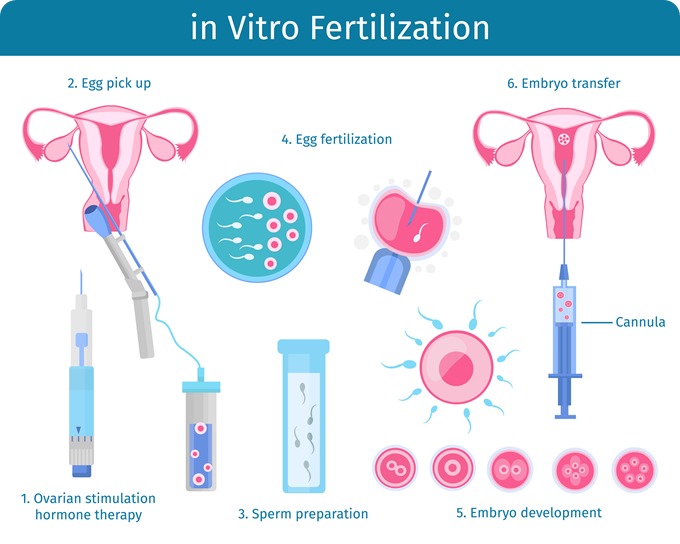What you need to know about in vitro fertilization (IVF)
In vitro fertilization (IVF) is a type of assisted reproductive technology (ART) in which fertilization takes place in laboratory conditions, outside the boundaries of the female body.
This process is divided into stages. Immediately after the preparatory stage, there will be a stage of hormonal stimulation to obtain oocytes.
After the collection of oocytes, they are cultivated in a special environment in an incubator until they are ready for insemination.
At the stage of fertilization, eggs and sperm are mixed and left alone for fertilization in a special environment called standard fertilization.
If motile spermatozoa are not available, intracytoplasmic sperm injection (ICSI) is preferred, which is when high-quality spermatozoa are injected into the cytoplasm of the oocyte using microneedles.
16-20 hours after fertilization, the resulting embryos grow in a laboratory incubator for up to five days, at which stage they become blastocysts.
The next stage will be the transfer of embryos into the woman’s womb, and when the embryo is implanted, pregnancy occurs.


